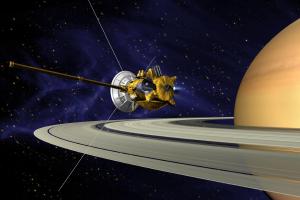Blog
The Last Mile
13 January 2015
 NASA
NASAA few days ago I wrote about how astronomers used parallax to measure the distance to Mars. It was a great leap forward in the 1700s, but measuring planetary distances is still a great challenge. We have much more precise measurement techniques, but we also need greater precision, particularly when sending spacecraft to these distant worlds.
One of the modern ways we can determine the distance to planets is to bounce radio waves off them. By measuring the time it takes for the radio waves to travel to the planet and back, we can determine its distance. This method is precise enough that in the 1960s it was used to measure the relativistic effects of gravity on the speed of light. Measurements such as these have been accurate enough for spacecraft flybys, and even landings on the Moon and Titan.
To get greater accuracy, we actually need to travel to these other worlds. When the Apollo missions landed on the Moon, they placed retroreflective mirrors on the lunar surface. By shining lasers on these mirrors we’ve been able to measure the lunar distance to within millimeters. But that method isn’t useful for the planets in our solar system.
But now a team has used radio telemetry from the Cassini spacecraft to measure the distance to Saturn accurate to less than a mile, and they did it using the same type of parallax once used to measure Mars. The team used the Very Long Baseline Array (VLBA), which is a network of radio telescopes spread across the globe. The telescopes measure the position of Cassini from their vantage point, and compared them to the position of distant quasars. Quasars are so distant that they are essentially fixed points in the sky. By comparing the apparent position of Cassini relative to the quasars, they could calculate the spacecraft’s parallax. Radio telescopes can be extremely precise, and the final result has an uncertainty less than a mile.
This type of work might not seem like much, but it is absolutely necessary for the next generation of space missions. If you want to land a spacecraft on Europa, for example, this is the type of precision needed to make that work.